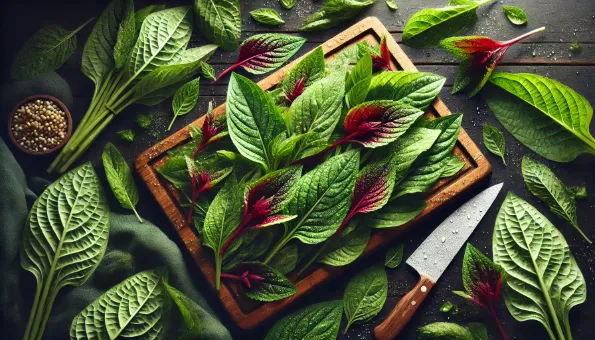Amaranth Leaves: Nutritious Leafy Green Packed with Iron & Vitamins
Tender green or red leaves rich in iron, calcium, vitamin A and C—popular in stir-fries, soups, and curries.

What Are Amaranth Leaves?
Amaranth leaves are the **leafy part of the amaranth plant** (*Amaranthus*), eaten as a vegetable in many cuisines across Asia, Africa, and the Americas. They have a mild, slightly earthy taste.
Nutrition (per 100 g cooked)
- **Calories:** ~23
- **Protein:** ~2.5 g
- **Iron:** ~2.3 mg
- **Calcium:** ~215 mg
- High in **Vitamin A, C, K**, folate, magnesium, and antioxidants
Benefits
- Excellent plant-based source of **iron and calcium**
- Rich in **antioxidants** and vitamins that support immune health
- High fiber content helps digestion
- Low in calories but nutrient dense
Considerations
- Contains **oxalates**, which may affect calcium absorption—blanching can reduce levels
- People with kidney stones may need to moderate intake
- Perishable—use soon after harvest
How to Use
- **Stir-fry:** with garlic and sesame oil
- **Soups & stews:** adds color and nutrition
- **Curries:** common in Indian cuisine (called “chaulai”)
- **Salads:** use young leaves raw or lightly blanched
- Can be steamed, sautéed, or added to omelets
Summary
Amaranth leaves are a powerhouse of micronutrients—ideal for boosting iron and vitamin intake with few calories.
- 1. Amaranth Leaves
amaranth leaves – jestivo lisnato povrće (zelene ili crveno-ljubičaste boje), bogato vitaminima A, C, K, željezom i kalcijem

